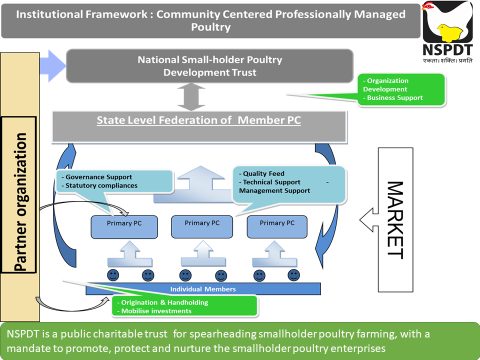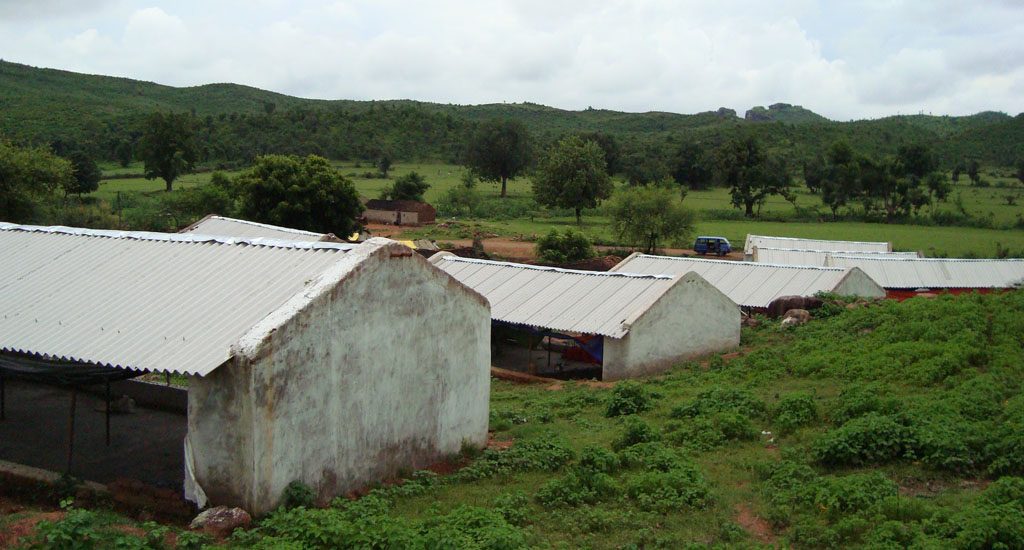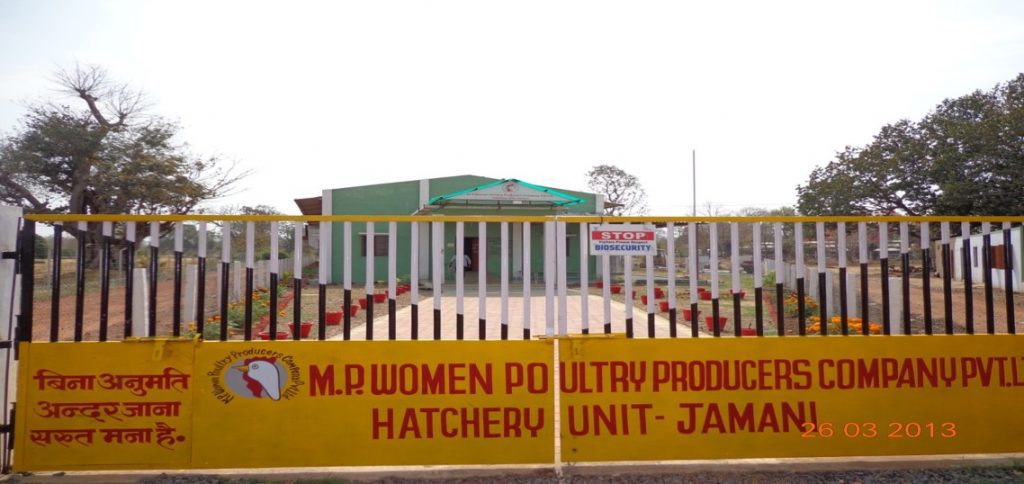In the earlier write-up, we had presented how COVID-19 has impacted the life and livelihood of women poultry farmer producers losing an assured source of income of about Rs 50,000 a year. (READ Thousands of smallholder women poultry farmers lose business to coronavirus misconceptions – I) The macro consequences are more severe and need to be assessed if the entire small holder poultry sector is to survive.
The example of small holder women poultry owners is a successful illustration of ensuring inclusion and last mile connectivity in the value chain. What is becoming clear is that COVID-19 has completely wiped out the entire value chain that supports 14,000 small farmers. Thus, any future revival depends on the resurrection of the entire value chain.
The value chain
In addition to the fact that women small holder producers grow chicken in a decentralized manner, the cooperative production management system also ensures that the producers have access to high quality realizable inputs as also services.
The following diagram presents the value chain and its critical components that support the end producer:

The value chain of the cooperative is designed in such a way as to allow seamless transition of non-producers (women with limited or no skills in poultry rearing) to producers, making them compete with large poultry farmers and engage with the market.
The value chain provides the producers all the necessary services such as access to high quality inputs and market, on-farm production supports, working capital, marketing of birds, and risk mitigation from input and output price movements, etc.
Professionally managed system
In addition, a community-based supervisor provides round-the-clock production management and farm-support. A professional manager trained in veterinary or management sciences manages and supervises the value chain. S/he is the chief functionary responsible for day-to-day management and operational business decisions.
The team consists of a production manager, veterinarians, marketing executive, accounts staff, etc. Poultry Management System based on Quality Assurance Systems approach provides detailed systems and procedures for business decisions, and helps in compliance and monitoring. This is supported by a customized accounts & management information system (MIS) software.

Producers’ organizations affiliated to National Smallholder Poultry Development Trust (NSPDT) form the largest chicken production house in Madhya Pradesh and Jharkhand. They have a monthly production capacity of about 30 lakh birds, modern breeder farms of 1.50 lakh birds, six hatcheries with capacity of 22.5 lakh chicks a month, and a fully automatic pellet feed mill with production capacity of 400 tons/day.
Women producer collectives
NSPDT orchestrated and spearheaded a national level effort to expand smallholder poultry in India, that led to the formation of more than 14,000 women poultry producers organized in 27 producers’ collectives (Cooperative Society/Producer Company) spread over 456 villages of 24 districts in the states of Madhya Pradesh, Jharkhand, Odisha, Assam and Maharashtra.
The collectives, along with the associated units such as hatcheries, breeder farms and feed plants, working under the aegis of NSPDT, posted sales of Rs 524.6 crore. NSPDT is not a private sector organization, but ismember owned.
The women members earned over Rs 40 crore profit in the financial year 2018-19. Till December 2019 the turnover was Rs 508.65 crore, making this the largest such poultry enterprise of tribal and Dalit women. All this changed for the worse in January 2020.
Cascading impact
Rumors linking COVID-19 and chicken consumption began in late January 2020. The Ministry of Animal Husbandry and Dairying confirmed that poultry is not the vector for this viral epidemic and consumption of chicken and eggs is safe. Unfortunately repeated appeals from government and medical experts didn’t lift the sentiments of the market.
The production units destroyed the remaining stock of around 8 lakh growing birds, 2 lakh day-old-chicks, and 10 lakh hatchlings and hatching eggs. Since beginning of March, they have been destroying about 50,000 hatching eggs/day, worth Rs 10 lakh/day at an average market price of Rs 20 / egg.

Similarly, table egg production is almost 1.5 lakh every day; major portion is getting destroyed with sale of small portion at Rs 1 / egg since beginning of March, leading to a daily loss of almost Rs 6 lakh. But the units still maintain the breeder flocks (around 1 lakh) and commercial layer (around 2 lakh), as their life cycle is 80 weeks, unlike broiler having 30-45 days life.
Cash loss on distress sale and culling of live birds and eggs (both hatching and table) – the aggregate system loss is estimated approximately at Rs 40 crore till 31 March 2020, resulting in erosion of nearly all the capital. The organization is now left with almost no capital to revive the business. There is also huge financial liability to various input suppliers (chicks, feed, medicine, etc.) and banks.
The network created additional livelihoods for rural youth within their own communities. The network employs around 50 professionals, 300 support staff, more than 500 community-based supervisors, and 400 workers at the breeder farms and hatcheries. In addition to the smallholder producers, the present crisis has threatened the jobs of these employees as well.
Rebuilding livelihoods
The task of rebuilding the livelihoods of these poor producers built painstaking over the last 20 years is enormous. These women producers feel that they have the abilities, infrastructure and confidence to continue operations.
To resume operations when conditions normalize, they need infusion of fresh capital in the system. Otherwise, the livelihoods of these 14,000 tribal and Dalit women are in jeopardy, forcing them back into the poverty and misery they had managed to come out of, thanks to the rewards of rearing poultry birds.
Measures to rebuild the sector
Several urgent interventions will be needed to rebuild the sector. Some of the most critical are:

- Compensation package to 14,000 small holder poultry farmers
- Infusion of fresh capital to resume operations
- Relaxation on poultry related activities such as allowing vehicles that transport chicks, feed, medicine, birds and eggs
- Similar permission for movement of vehicles so that poultry products reach markets
- Opening of retail outlets shut during lockdown, ensuring proper social distancing measures
- Clear positive communication campaign to counter the rumors in future and focused campaigns to highlight that chicken consumption is safe, and that it has no correlation with the spread of COVID-19.
Deepak Tushir did his graduation in zoology from Delhi University and completed his MBA from Amrita University, Coimbatore in 2011. Since then he has been associated with National Smallholder Poultry Development Trust, Bhopal.
Ajit Kanitkar is a senior advisor at VikasAnvesh Foundation, Pune. Prior to this, he worked at Ford Foundation and Swiss Agency for Development and Cooperation, both in New Delhi. He has also taught at Institute of Rural Management, Anand. Views are personal.


